Dacia Sandero vs Mitsubishi Eclipse Cross – Differences & prices compared
Compare performance, boot space, consumption and price in one view.
Find out now: which car is the better choice for you – Dacia Sandero or Mitsubishi Eclipse Cross?
The Dacia Sandero (Hatchback) comes with a Petrol or LPG engine and Manuel or Automatic transmission. In comparison, the Mitsubishi Eclipse Cross (SUV) features a Plugin Hybrid engine with transmission.
When it comes to boot capacity, the Dacia Sandero offers 328 L, while the Mitsubishi Eclipse Cross provides 359 L – depending on how much space you need. If you’re looking for more power, decide whether the 110 HP of the Dacia Sandero or the 188 HP of the Mitsubishi Eclipse Cross suits your needs better.
In terms of consumption, the values are 5.30 L per 100 km for the Dacia Sandero, and 2 L for the Mitsubishi Eclipse Cross.
Price-wise, the Dacia Sandero starts at 10700 £, while the Mitsubishi Eclipse Cross is available from 36000 £. Compare all the details and find out which model fits your lifestyle best!
Dacia Sandero
The Dacia Sandero stands out as an exceptional value in the hatchback market, offering a blend of practicality and affordability that appeals to a wide range of drivers. Its understated design is complemented by a surprisingly spacious interior, providing ample comfort and functionality for everyday use. With impressive fuel efficiency and a solid reputation for reliability, the Sandero remains a popular choice for those seeking a no-nonsense vehicle without sacrificing essential modern features.
details @ dacia.at
@ dacia.at
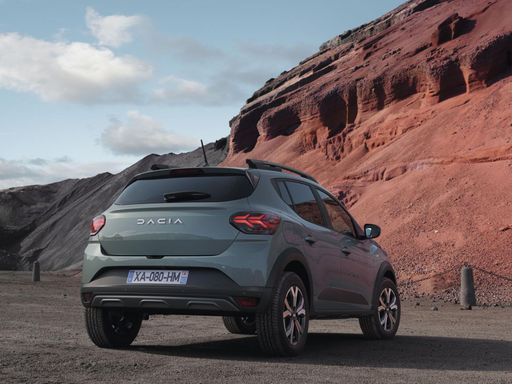 @ dacia.at
@ dacia.at
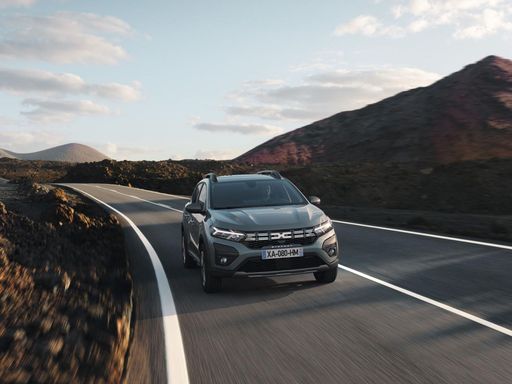 @ dacia.at
@ dacia.at
Mitsubishi Eclipse Cross
The Mitsubishi Eclipse Cross presents a sleek fusion of dynamic design and versatile functionality, perfect for urban adventures and weekend getaways alike. Its elegant lines and bold front grille make a strong statement on the road, while its well-appointed interior offers a comfortable and connected driving experience. With advanced safety features and intuitive technology, the Eclipse Cross ensures drivers feel secure and in control, whether navigating city streets or scenic routes.
details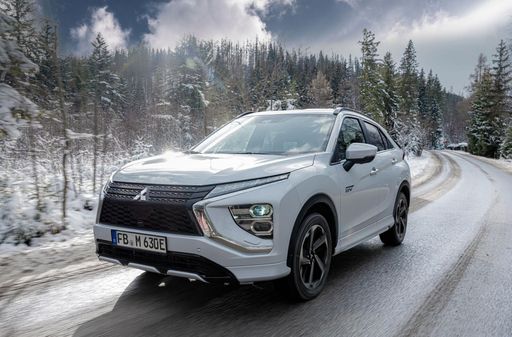 @ Mitsubishi Motos
@ Mitsubishi Motos
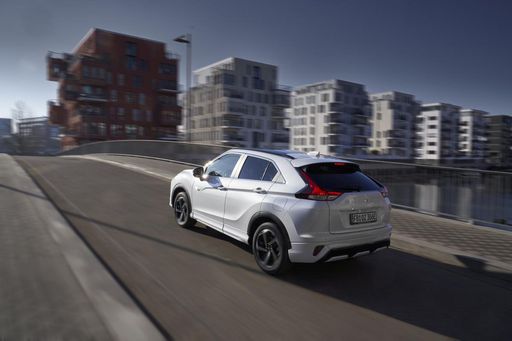 @ Mitsubishi Motos
@ Mitsubishi Motos
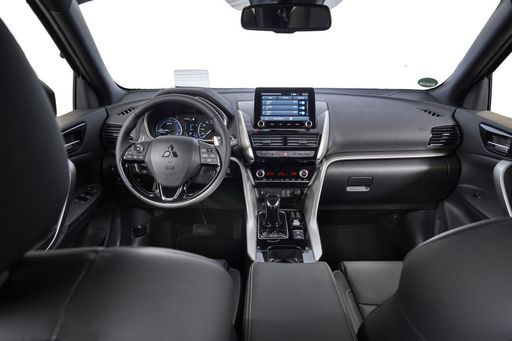 @ Mitsubishi Motos
@ Mitsubishi Motos

|

|
|
|
|
Costs and Consumption |
|
|---|---|
|
Price
10700 - 16700 £
|
Price
36000 - 42000 £
|
|
Consumption L/100km
5.3 - 7.1 L
|
Consumption L/100km
2 L
|
|
Consumption kWh/100km
-
|
Consumption kWh/100km
-
|
|
Electric Range
-
|
Electric Range
45 km
|
|
Battery Capacity
-
|
Battery Capacity
-
|
|
co2
105 - 140 g/km
|
co2
46 g/km
|
|
Fuel tank capacity
32 - 50 L
|
Fuel tank capacity
43 L
|
Dimensions and Body |
|
|---|---|
|
Body Type
Hatchback
|
Body Type
SUV
|
|
Seats
5
|
Seats
5
|
|
Doors
5
|
Doors
5
|
|
Curb weight
1089 - 1209 kg
|
Curb weight
1985 - 2052 kg
|
|
Trunk capacity
328 L
|
Trunk capacity
359 L
|
|
Length
4088 - 4099 mm
|
Length
4545 mm
|
|
Width
1848 mm
|
Width
1805 mm
|
|
Height
1499 - 1535 mm
|
Height
1685 mm
|
|
Payload
404 - 436 kg
|
Payload
373 - 440 kg
|
Engine and Performance |
|
|---|---|
|
Engine Type
Petrol, LPG
|
Engine Type
Plugin Hybrid
|
|
Transmission
Manuel, Automatic
|
Transmission
-
|
|
Transmission Detail
Schaltgetriebe
|
Transmission Detail
-
|
|
Drive Type
Front-Wheel Drive
|
Drive Type
All-Wheel Drive
|
|
Power HP
67 - 110 HP
|
Power HP
188 HP
|
|
Acceleration 0-100km/h
10 - 16.7 s
|
Acceleration 0-100km/h
10.90 s
|
|
Max Speed
158 - 183 km/h
|
Max Speed
162 km/h
|
|
Torque
95 - 200 Nm
|
Torque
-
|
|
Number of Cylinders
3
|
Number of Cylinders
4
|
|
Power kW
49 - 81 kW
|
Power kW
138 kW
|
|
Engine capacity
999 cm3
|
Engine capacity
2360 cm3
|
General |
|
|---|---|
|
Model Year
2024 - 2025
|
Model Year
2021 - 2022
|
|
CO2 Efficiency Class
D, C, E
|
CO2 Efficiency Class
B
|
|
Brand
Dacia
|
Brand
Mitsubishi
|
Dacia Sandero
The Dacia Sandero: An Affordable Gem in the Automotive World
The Dacia Sandero has consistently positioned itself as a quintessential choice for budget-conscious buyers who seek practicality without sacrificing quality. As an integral part of Dacia's line-up, the Sandero offers a compelling blend of efficiency, robustness, and value for money. With the 2024 model, Dacia continues to enhance its offerings with a range of engine options and trim levels to satisfy diverse customer needs.
Innovative Engine Options
The latest Dacia Sandero boasts a variety of engine options, including petrol and gas variants. The range covers outputs from 67 PS to 110 PS, providing flexibility for different driving preferences. For those prioritising fuel economy, the SCe 65 petrol engine offers a commendable consumption figure of 5.3 litres per 100 km. Meanwhile, the TCe 100 ECO-G engine, running on gas, balances efficiency and performance with an output of 101 PS and a consumption of 6.5 litres per 100 km.
Efficiency and Driving Dynamics
With the Dacia Sandero, efficiency is key. The innovative TCe 90 petrol engine, available with both manual and automatic transmissions, ensures a smooth ride combined with competitive fuel efficiency - approximately 5.2 to 5.7 litres per 100 km. Additionally, the Sandero maintains impressive CO2 emissions ranging from 105 to 139 g/km, reinforcing its suitability for eco-conscious drivers.
Practical Design and Spacious Interiors
The Dacia Sandero’s design speaks to the needs of modern urban and suburban drivers. As a five-door hatchback, it provides enormous practicality alongside a spacious interior. The cabin comfortably seats five passengers and offers a generous 328-litre boot, which can easily accommodate everyday luggage and more. Its exterior dimensions, including a length of 4088 to 4099 mm and a width of 1848 mm, enable the Sandero to navigate city streets with ease.
Safety and Technological Features
Safety remains a priority for Dacia, and the Sandero is equipped with a host of features to ensure peace of mind for drivers and passengers. Options such as the latest braking technologies, stability control, and multiple airbags come standard across various trim levels. Technologically, the Sandero incorporates features like a modern infotainment system and essential connectivity options to enhance the driving experience.
Concluding Thoughts
The Dacia Sandero represents a remarkable blend of affordability, efficiency, and practicality, solidifying its place in the competitive compact car segment. Whether it's daily city commutes or longer journeys, the Sandero offers a version tailored to meet a wide array of demands and preferences, embodying Dacia’s commitment to delivering more for less. With competitive pricing and the promise of a reliable, economical drive, the 2024 Sandero continues to resonate with those seeking value in their automotive investment.
Mitsubishi Eclipse Cross
Unveiling the Mitsubishi Eclipse Cross: A Pioneer in Innovation
The Mitsubishi Eclipse Cross has captivated the automotive world since its introduction. This SUV merges the heritage of Mitsubishi's Eclipse sports coupe with the robust aesthetics of a modern crossover, creating a vehicle that stands out both on urban roads and open highways. Let's delve into the innovative features and technical details that define this remarkable vehicle.
Powerful Hybrid Performance
At the heart of the Mitsubishi Eclipse Cross is its cutting-edge plug-in hybrid engine. With a power output of 188 PS (138 kW), this hybrid marvel combines a traditional 2.4-litre petrol engine with an advanced electric motor, delivering an impressive fuel economy of just 2 litres per 100 km. Not only does it offer optimal performance, but it also commits to eco-friendliness with a CO2 emission rated at a mere 46 g/km.
All-Wheel Drive for Unmatched Control
The Eclipse Cross comes equipped with an all-wheel-drive system, ensuring traction and stability across various terrains. This is particularly beneficial for drivers who venture beyond the smooth highways, providing confidence and control whether you're tackling slippery city streets or rugged countryside trails.
Design and Comfort: A Fusion of Style and Practicality
The striking design of the Mitsubishi Eclipse Cross is a fusion of style and functionality. Its dimensions, 4545 mm in length, 1805 mm in width, and 1685 mm in height, contribute to a spacious interior without compromising on an elegant silhouette. This SUV comfortably seats five passengers and boasts a generous boot space of 359 litres, ideal for family getaways or adventure trips.
Technological Advancements for Modern Drivers
Mitsubishi has integrated several technological advancements into the Eclipse Cross to enhance driving experience. The model offers an electric range of 45 km, perfect for daily commutes or short journeys without engaging the conventional engine. Additionally, its user-friendly infotainment system ensures connectivity and entertainment on the go.
Safety Features: Protecting What Matters Most
Safety is paramount in the design of the Eclipse Cross. It includes a selection of contemporary safety features to protect both passengers and pedestrians. With a CO2 efficiency class rated at B, it not only aims to safeguard its passengers with advanced collision mitigation systems but also to ensure a greener and more sustainable driving experience.
Value for Money: The Perfect Investment
Positioned with a price range between €41,990 and €48,990, the Mitsubishi Eclipse Cross offers substantial value considering its hybrid technology and comprehensive feature set. Additionally, with monthly costs ranging from €1,165 to €1,258 and cost per km between 46.6 and 50.3 cents, it is an economically sound choice for eco-conscious drivers looking for an efficient and reliable vehicle.
In conclusion, with its blend of hybrid power, all-wheel-drive capability, and a focus on innovation and safety, the Mitsubishi Eclipse Cross is an ideal candidate for those seeking a versatile and efficient SUV. Whether you're navigating city streets or cruising countryside roads, the Eclipse Cross promises a drive that is both exhilarating and responsible.
The prices and data displayed are estimates based on German list prices and may vary by country. This information is not legally binding.
